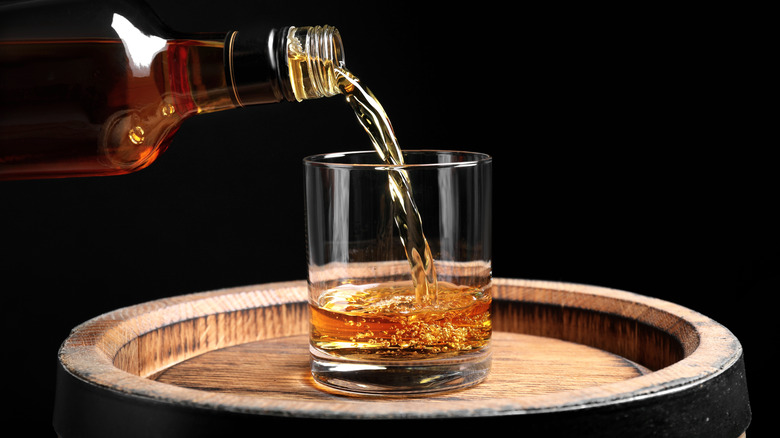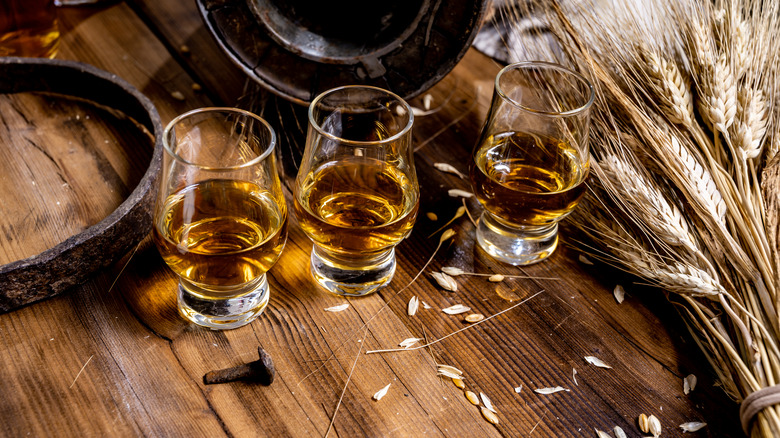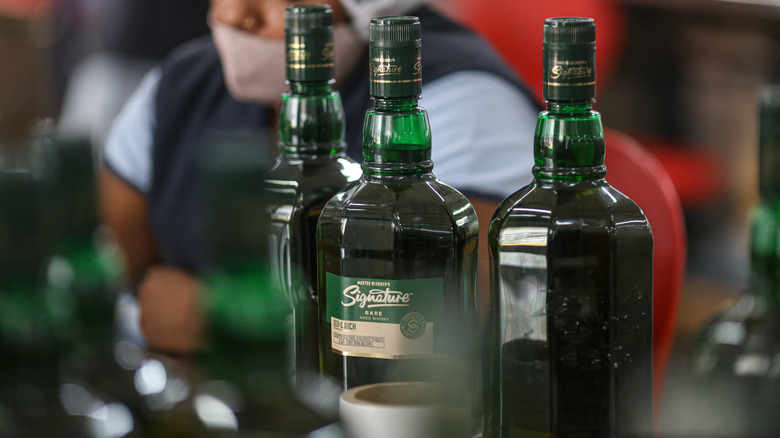Move Over Scotland — You Should Be Trying Whisky From India
Whisky is a spirit category that has a whole lot going on, starting with the way it's written. In general, whiskey — spelled with an "ey" — indicates that the spirit is from Ireland, the United States, or Mexico — while whisky without the "e" refers to most other bottles that come from Scotland, Japan, Canada, Australia, South Africa, and India.
While India may not be the most well-known in the industry, its contributions are noteworthy. Some Indian whisky producers are pushing the envelope when it comes to what the liquor can be by creating a spirit that showcases the uniqueness of Indian grains, climate, and water rather than trying to replicate the taste of their European and North American counterparts. Some of the products from brands like Amrut and Rampur can go toe-to-toe with the best whiskies in the world. They are popular in global markets and have won prestigious awards.
Other Indian-made spirits mix grain alcohol made from corn, wheat, rye, or barley with molasses- or sugar cane-based spirits — these are the most popular among Indian customers. Due to a previous lack of specific regulations for whisky in India, these spirits have historically been labeled as whisky in-country, but in Europe, they are sold as "spirit drinks" instead.
How is Indian whisky defined?
In general, a single malt refers to a blend that only includes whisky from a single distillery but can be made with multiple grains. Single-grain whisky is made from just one type of grain. Aging duration requirements, aging vessel materials, alcohol percentage by volume, and number of distillations vary by country of origin. In India, as of March 2024, according to the Food Safety and Standards Authority of India, single-malt whisky must use only malted barley and include whisky from a single distillery. Single-grain whisky must use any one malted or unmalted grain, excluding barley, and only include whisky from a single distillery.
Though India is not technically producing scotch whisky — since scotch whisky must be made in Scotland – the Indian whisky market has a strong affinity for the scotch style. Scotch was brought to India during British colonial rule and remained popular as an import after independence. In 1982, Amrut became the first homegrown distillery to start making Scotch-style single malt whisky in India. Indian single malt whisky often follows the same processes as Scotch single malt but typically uses Indian grains. Because of the cooler climate in northern India, grains like barley will be grown there and sent to distilleries in the south of the country. Sometimes, traditionally peat-smoked Scottish barley is imported to India and used to make peated whisky.
How does Indian whisky taste?
Indian whisky made with sugar-based spirits tends to be more fruity and sweet with notes of caramel and vanilla. This version of Indian whisky tastes more similar to rum, which is always made by fermenting some sort of sugar cane product.
When it comes to making single malt whisky in India, the yield is lower than scotch. That is partially because the six-row variety of barley that is grown in India has more protein and is less starchy than the two-row barley grown in Scotland. The other reason the yield is lower is because of the warm climate and high humidity, which accelerates evaporation. The amount of whisky lost to evaporation is known as the angel's share. That evaporation results in a whisky that develops a deeper flavor and higher alcohol content in a much shorter amount of time.
Many brands of Indian single malt are described as having a notable spiciness, and often, the underlying taste of the grains really takes center stage. Both scotch and Indian whisky can have a wide variety of tasting notes — such as dried or fresh fruit, citrus, baking spices, smoke, leather, and grass.
Of the 24 active distilleries, the brands Indri, Paul John, Rampur, GianChand, and Amrut are some of the most well-known and highly regarded when it comes to Indian whisky. If you are used to high-quality single malt and blended scotch whisky, these brands are a great place to start — they definitely hold their own.



